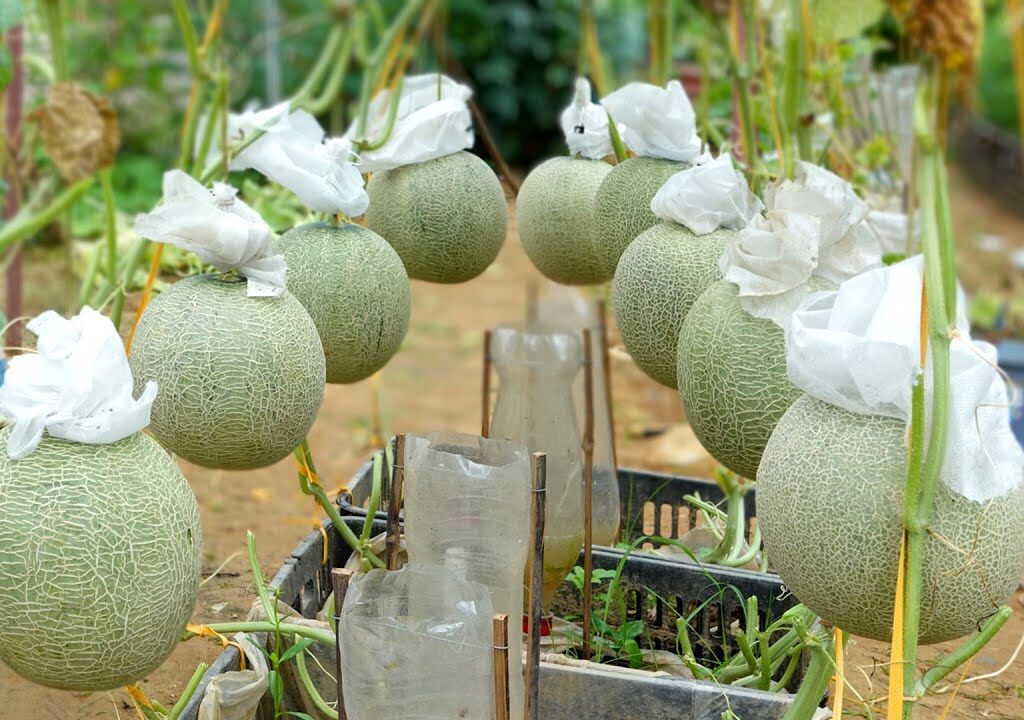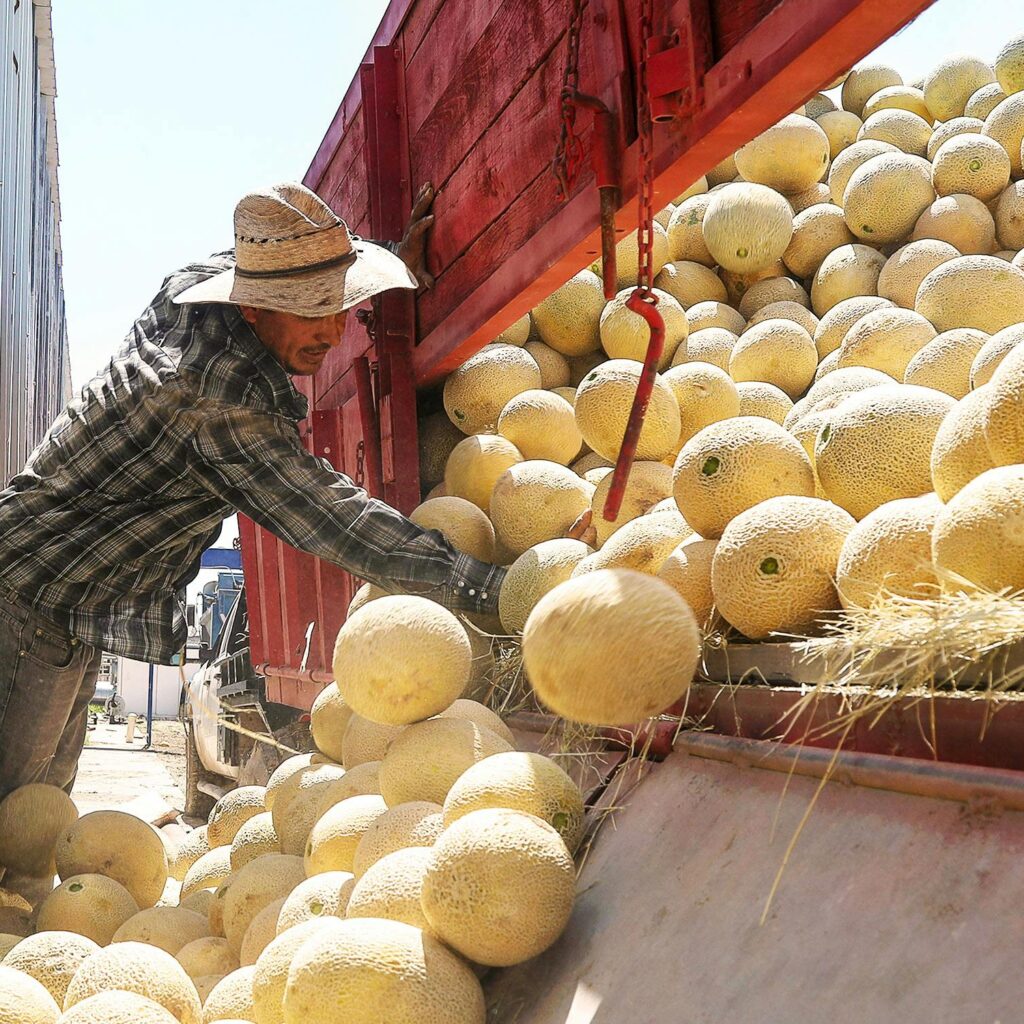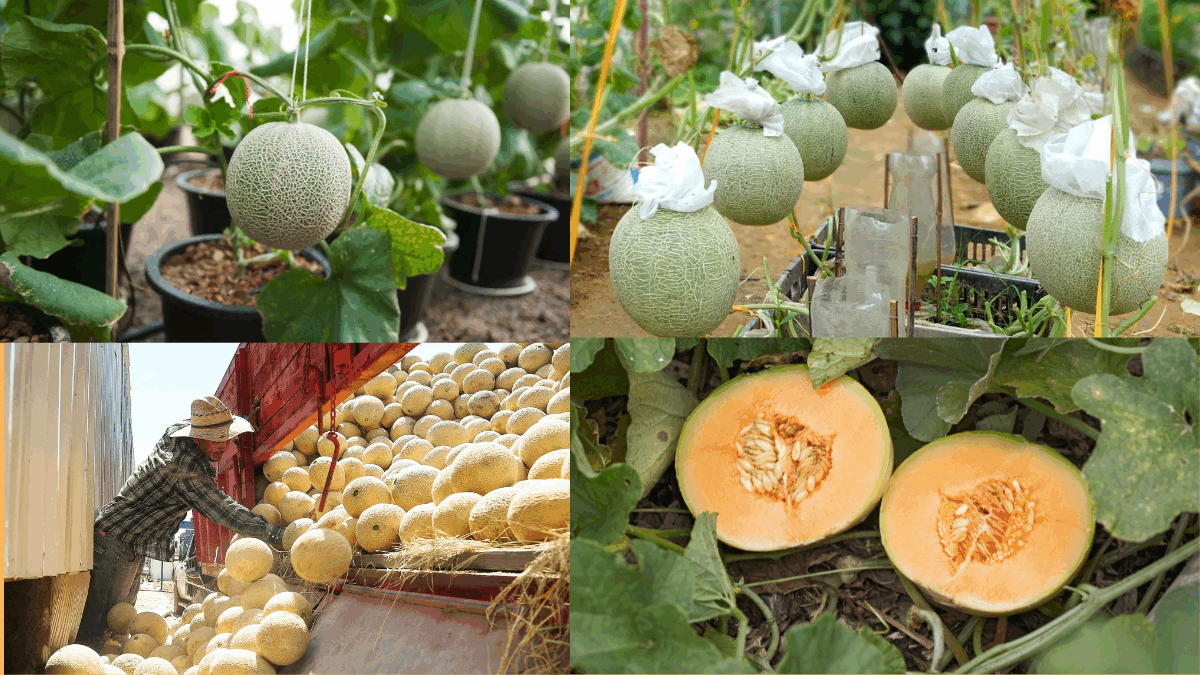When the summer sun is high and the days stretch long, there’s nothing quite like enjoying a cold, juicy slice of fresh cantaloupe. Sweet, fragrant, and loaded with vitamins, cantaloupe is one of the easiest and most rewarding fruits you can grow in your backyard garden. Even better — with a little know-how and care, you can enjoy a steady harvest of these refreshing summer treats right from your own soil.
In this detailed guide, you’ll learn how to grow cantaloupe successfully, from selecting the right variety and preparing your soil to harvesting perfectly ripened melons. Whether you’re a seasoned gardener or trying your hand at fruit-growing for the first time, this article has you covered.

Why Grow Cantaloupe in Your Garden?
Besides their irresistible flavor and high nutritional value, cantaloupes are relatively easy to grow and thrive in warm, sunny conditions. Growing them yourself also ensures:
- Freshness you won’t find at the store
- Control over pesticides and soil health
- A fun and rewarding gardening project for the whole family
Cantaloupes love heat, sunshine, and fertile soil — making them a perfect candidate for home gardeners in most regions during the summer.
Choosing the Right Cantaloupe Variety
Cantaloupes, also called muskmelons in some areas, come in several varieties, with differences in size, sweetness, growing season, and disease resistance.
Popular Cantaloupe Varieties:
- ‘Hale’s Best Jumbo’: Heirloom favorite with a sweet, aromatic flavor.
- ‘Minnesota Midget’: Compact plant ideal for small gardens or containers.
- ‘Ambrosia’: Exceptionally sweet, fragrant, and disease-resistant.
- ‘Sugar Cube’: Personal-sized melons with concentrated sweetness.
- ‘Athena’: Common market variety with good disease resistance.
Tip: Choose a variety suited to your climate and available growing space. Shorter-season varieties like ‘Minnesota Midget’ are great for cooler regions.
Preparing the Soil for Planting
Cantaloupes thrive in light, well-drained, fertile soil with a pH between 6.0 and 6.8. Rich, loose soil warms quickly, promotes root growth, and ensures your melons develop the sweet, juicy flesh you’re craving.
Steps to Prepare Soil:
- Choose a sunny location with at least 8 hours of direct sunlight.
- Amend soil with organic compost and well-rotted manure for fertility.
- Work in a balanced fertilizer like 10-10-10 or 5-10-10 before planting.
- Ensure excellent drainage by raising beds or planting in mounds.
Pro Tip: Melons prefer soil temperatures above 70°F (21°C) — consider using black plastic mulch to warm soil early in the season.

Planting Cantaloupe: When and How
Cantaloupes can be grown from seed or transplanted seedlings. In colder climates, starting seeds indoors is a good way to get a head start.
When to Plant:
- Direct-sow seeds outdoors 1–2 weeks after the last frost when soil is warm.
- Start seeds indoors 3–4 weeks before the final frost date and transplant when outdoor temperatures stay above 70°F.
How to Plant:
- Create small hills or mounds, spacing them about 3–4 feet apart.
- Sow 4–6 seeds per hill, 1 inch deep.
- Once seedlings sprout, thin to the 2 strongest plants per hill.
If using transplants, harden them off gradually before planting.
Caring for Your Cantaloupe Plants
Cantaloupes require consistent warmth, moisture, and nutrients to produce their best fruit.
Watering:
- Water deeply once or twice a week, about 1–2 inches of water.
- Keep soil consistently moist, especially during flowering and fruit development.
- Avoid overhead watering to reduce fungal disease risk — water at the base of plants.
Tip: Reduce watering slightly as fruits near maturity to concentrate sweetness.
Mulching:
- Apply organic mulch like straw, shredded leaves, or grass clippings to retain moisture, suppress weeds, and keep fruit clean.
Fertilizing:
- Side-dress plants with a high-phosphorus fertilizer when vines start to run and again when flowers appear.
- Avoid excessive nitrogen, which encourages leaves over fruit.

Training Vines and Saving Space
Though cantaloupes naturally sprawl, you can train them vertically with a sturdy trellis or fence to save space.
Trellising Tips:
- Support vines with a strong trellis or cage.
- As fruit develops, use slings made from fabric or netting to support the weight.
- Keep vines tidy and direct growth by gently tying with soft garden twine.
Vertical growing improves air circulation, reducing disease and making harvesting easier.
Pollination and Flowering
Cantaloupes produce both male and female flowers. Pollination by bees and other insects is crucial for fruit set.
Identifying Flowers:
- Male flowers appear first in clusters.
- Female flowers have a small swelling at the base that develops into a melon after pollination.
Encourage pollinators by planting bee-friendly flowers nearby or hand-pollinate by transferring pollen from male to female flowers using a small brush or cotton swab.
Common Pests and Problems
Common Pests:
- Aphids
- Cucumber beetles
- Squash bugs
- Spider mites
Control pests with insecticidal soap, neem oil, or floating row covers early in the season.
Common Diseases:
- Powdery mildew
- Downy mildew
- Anthracnose
- Fusarium wilt
Prevent disease by:
- Ensuring good air circulation.
- Watering at the base of plants.
- Removing infected leaves or plants promptly.
- Rotating crops yearly.
Harvesting Cantaloupe
Cantaloupes take about 70–90 days from planting to harvest, depending on the variety.
How to Know When Cantaloupe is Ripe:
- The skin changes to a dull tan or yellowish color.
- A sweet, musky aroma develops at the blossom end.
- The melon easily slips off the vine with gentle pressure — known as the “full-slip stage.”
- The netting on the rind becomes pronounced and coarse.
Avoid harvesting too early — cantaloupes don’t continue to sweeten after picking.

Storing and Enjoying Your Cantaloupes
After harvesting:
- Store whole cantaloupes at room temperature for a day or two to fully develop flavor.
- Refrigerate ripe melons to extend shelf life.
- Cut cantaloupe should be stored in the refrigerator and consumed within 3–4 days.
Delicious Ways to Enjoy Cantaloupe:
- Fresh slices or melon balls
- Blended into smoothies or chilled soups
- Paired with prosciutto for a sweet-savory appetizer
- Tossed in fruit salads
- Frozen into refreshing sorbets or popsicles
Final Thoughts
Growing cantaloupes at home is easier than you might think. With a sunny spot, warm soil, and a little patience, you can enjoy homegrown, vine-ripened melons bursting with natural sweetness. The rewards are well worth the effort — from sun-warmed fruits plucked right from the vine to refreshing summer snacks for your family.
Whether you’re growing them in backyard beds, raised planters, or along a fence line, cantaloupes are a fantastic addition to any summer garden. Plant them this season and savor the sweet taste of summer, straight from your own garden.






Leave A Comment